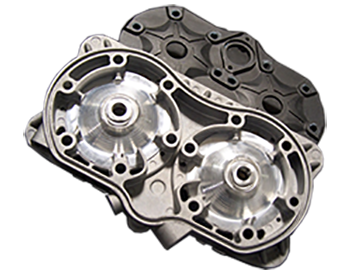ADJUSTING YOUR CARBURETOR
Needle richness will have a great effect on fuel mileage.
BUT, having said all that, it will also have a great effect on whether or not you come back under your own power or under the sled pulling yuz power!
There are a few things to consider when "tuning in" a sled's fuel settings. I will try and hit a few key factors that may or may not be so obvious
1) The Main jet effects the mid-range settings and effects it in a big way. I will explain... The jet needle is a tapered rod. This taper is directly related to how much fuel it will let the MAIN JET flow.
Fatter taper = less flow---> thinner taper = more flow..
2) The jet needle, from idle to about 3/4 throttle position, is INSIDE the MAIN JET.. So, the taper is very important in how much flow is coming from the MAIN JET, but so is the throttle position.
3) As you raise the jet needle via throttle opening, the main jet becomes less obstructed/blocked and allows fuel to flow around the jet needle.. This is your part throttle fuel flow control.
Your pilot jet is still a player but the more the throttle opens, the less it is a factor.
4) Since the main jet is a major player in the part throttle fuel flow, one should ALWAYS "dial in" the WOT, main jet, circuitry BEFORE EVER adjusting the jet needle/part throttle circuitry.
WHY?? Because the main jet effects part throttle fuel flow and the jet needle has little to no effect on WOT fuel flow.
5) Since #4 (above) is not often understood, many tune in the part throttle running , first, and then adjust the WOT , after.. This can lead to ,part throttle, engine failure or a very poor running engine, OR BOTH!
Again, always tune in the WOT circuitry before ever adjusting the part throttle circuitry.
6) When do you know when you have the part throttle circuitry adjusted correctly?
This is a good question and somewhat difficult to answer..
a) If you are looking for MAX fuel mileage then this gets a bit more tricky. Max fuel mileage also means min, or very close to it, fuel flow in the part throttle circuitry. Since the jet needle is tapered and this taper varies with throttle opening, you can get into trouble because you never know ,exactly, what throttle position you are at and the air-flow via air-box, is also a variable and is a major player in the fuel that will flow from your carb. So, be careful when shooting for max fuel mileage.
My suggestion is to not strive for max fuel mileage and concentrate more on "SAFE" but "RESPONSIVE" part throttle running. I tune in my part throttle as so: If I can get in or out of the throttle at any throttle position and have the engine respond without hesitation, I have my desired setting.
Sometimes, with this desired setting, I will hear a "gurgle" which would lead me to believe that I am over-fueling the engine.. BUT, it is best to ignore this "gurgle"!
WHY? Because the engine is at the responsiveness level I desire.... I have no hesitation when getting in or out of the throttle! So, the "gurgle" I hear should be ignored since the engine is running as desired.
7) How do I know if I am Lean or Rich ??
a) USUALLY, any lean condition will present itself as a "BOG". So, one should listen for this low droning, bog when adjusting.
b) USUALLY, a rich condition will present itself as a "gurgle" or "sputter" and with this comes a lack of throttle response.
PILOT Circuitry: This circuit is often way over-rated. The pilot circuit is really only a player from idle to about 1/8th throttle opening. If you are having issues above 1/8th throttle, the pilot jet is not a major player.
If you have a high or hanging idle, usually, this points to a pilot jet that is too small.
If you have a very low idle that can not be adjusted via idle screw or air/fuel screw, then this points to a pilot jet that is too large.
Hopefully this clears up a few things.


